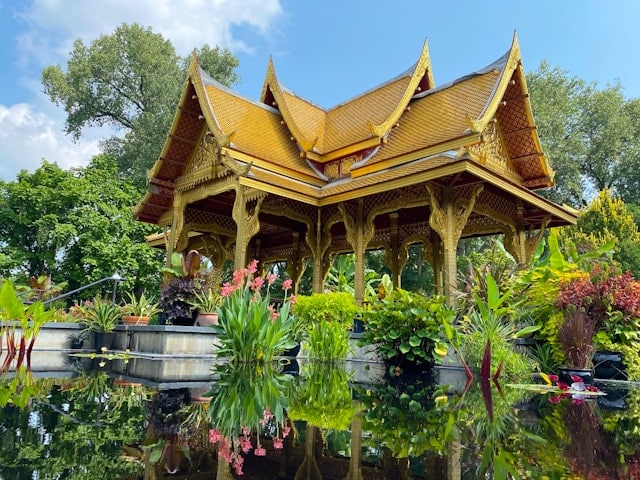As urban spaces become increasingly compact and dense, there is a growing need to figure out how to incorporate green spaces into these environments. One solution that has been gaining traction is the concept of vertical gardens, a sustainable design trend that can transform the urban landscape. This innovative method of bringing nature into homes and buildings is not only aesthetically pleasing, but also presents a myriad of benefits for the environment and the individuals who inhabit these spaces. Today, we’ll delve into the best practices for integrating vertical gardens into your urban residential design.
The Fundamental Elements of Vertical Gardens
In essence, a vertical garden is a garden that grows upwards, using a wall or a structure with integrated hydroponics. This approach allows you to grow plants on any vertical panel, whether it’s a wall, a fence, or even the roof of a building. There are a variety of plants that can thrive in vertical gardens, from colorful flowers to lush greens, thus providing a burst of life and color to urban areas that are typically dominated by concrete and steel.
Cela peut vous intéresser : How to Align Real Estate Investment Strategies with the UK’s Net-Zero 2050 Ambitions?
The basic elements of a vertical garden include a frame, which is attached to the wall or fence, and a layer of fabric, usually made of felt or coir, which serves as a support for the plants to grow on. A drip irrigation system is also incorporated into the design to provide water to the plants. It’s important to note that the choice of plants for your vertical garden will depend on factors such as the amount of sunlight available, the local climate, and the direction the wall is facing.
The Green Benefits of Vertical Gardens
Taking the time to integrate vertical gardens into your urban residential spaces can yield a multitude of benefits. For one, they are an effective means of reducing the heat island effect, a phenomenon where urban areas become significantly hotter than surrounding rural areas due to human activities. Vertical gardens, with their lush plants, can help cool the air around buildings and thus reduce energy consumption.
Cela peut vous intéresser : What Are the Best Practices for Acoustic Design in High-Rise Residential Buildings?
Another significant perk is the improvement of air quality. Plants naturally absorb carbon dioxide and release oxygen, thereby helping to purify the air. In urban settings where air pollution is often a concern, vertical gardens can serve as a natural filter, trapping dust and pollutants and providing cleaner, healthier air for residents.
Moreover, vertical gardens contribute to biodiversity in urban spaces. They can serve as habitats for a variety of insects and birds, and can also grow a variety of plant species, including those that are indigenous to the area. This can help preserve local flora and fauna, which are often threatened by urban development.
How to Integrate Vertical Gardens into Urban Residential Designs
The integration of vertical gardens into urban residential designs can be a complex process, but the outcome can drastically improve the aesthetic and environmental quality of the space.
When planning the integration, consider the orientation of the building. The amount of sunlight that a vertical garden receives will greatly affect the types of plants that can be grown. South-facing walls, for instance, will receive the most sunlight and can thus accommodate a wider variety of plants.
It’s also important to select the right materials for your vertical garden. The frame should be sturdy enough to support the weight of the plants, and the fabric should be durable and capable of retaining moisture. The irrigation system should also be efficient and easy to maintain.
Lastly, the design of the vertical garden should be in harmony with the overall design of the building. It should not only add greenery but also enhance the aesthetic appeal of the building.
Vertical Gardens: A Sustainable Solution for Urban Spaces
Vertical gardens represent a significant trend in sustainable urban design. Not only do they reintroduce green spaces into urban areas, they also help to mitigate the environmental impact of buildings.
Incorporating vertical gardens into the design of residential buildings is a way of creating a symbiotic relationship between nature and urbanization. It’s a design approach that respects the environment, promotes biodiversity, and enhances the quality of life for urban dwellers.
In conclusion, vertical gardens are more than just a design trend; they are a sustainable solution to the problem of limited green spaces in urban areas. With careful planning and design, they can transform the urban landscape, making it a healthier and more pleasant place to live.
So, when considering your next urban residential design project, remember to consider integrating a vertical garden. It’s a decision that will not only beautify your space but also contribute to a more sustainable future.
Case Studies on Successful Integration of Vertical Gardens into Urban Residential Design
Many urban residential spaces around the world have successfully integrated vertical gardens into their design, serving as inspiration for future projects. The process of integrating vertical gardens into urban residential design is complex but the outcome can drastically improve the aesthetic and environmental quality of the space. Let’s delve into some of these case studies.
In Paris, one can find the Musée du Quai Branly, which is home to one of the most iconic vertical gardens globally. This ‘green wall’, covering an area of over 800 square meters, is a testament to the power of vertical gardening in transforming urban landscapes. The green wall consists of over 15,000 plants from 150 species, effectively bringing biodiversity right into the heart of the city.
Singapore, renowned as a ‘City in a Garden’, has also integrated vertical gardens into its urban planning. The skyscraper ‘Oasia Downtown’, covered in a vertical garden, boasts a variety of plant species that attract insects and birds, creating an urban habitat for these species.
These case studies underscore the adaptability of vertical gardens. They can be integrated into a variety of building designs, from tall buildings to smaller residential structures. Whether it’s a large-scale green wall or a modest rooftop garden, vertical gardens can significantly enhance the urban environment.
Conclusion: Vertical Gardens – The Green Infrastructure of the Future
In the face of rapid urbanization, vertical gardens offer a promising solution to reintroduce green spaces into our cities. They represent a significant shift in landscape design, utilizing vertical spaces to create lush, green environments.
More than just a design element, vertical gardens contribute significantly to the ecosystem. They improve air quality, reduce the heat island effect, and promote biodiversity in urban areas. These green building features provide a natural filter, trapping dust and pollutants while providing cleaner, healthier air for residents.
Vertical gardens are not just about bringing nature back into our cities. They are about fostering a healthier, sustainable relationship with the environment. By integrating vertical gardens into urban residential design, we can transform the urban landscape into a healthier and more pleasant place to live.
The integration of vertical gardens into the urban environment is more than a trend; it is a necessity for the future of urban planning. It is a testament to human ingenuity and a commitment to creating sustainable, livable cities. As we look to the future, it is clear that vertical gardens will play a crucial role in shaping the urban landscapes of tomorrow.
In conclusion, when planning your next urban residential design project, consider integrating a vertical garden. It’s a decision that will not only enhance the aesthetic appeal of your space but also contribute to a greener, healthier future for all. Vertical gardens are more than just a design trend; they are a viable, sustainable solution for urban spaces.











